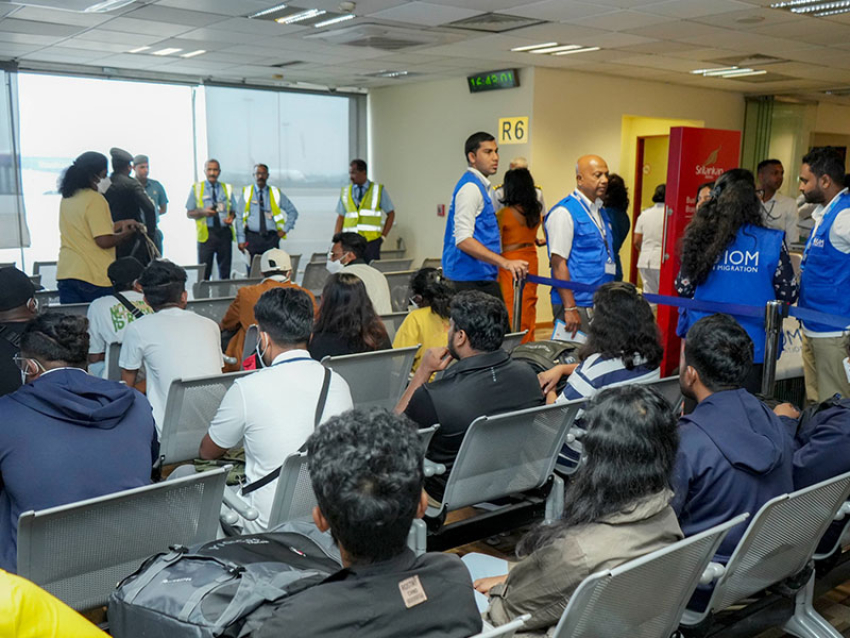They work closely with the media to sensitize them on reportage of public health issues and work as ambassadors to uplift the health in the communities to reach to a global standard. Every year, with the induction of a new president and new council members, they operate on a different theme every year. The theme of the current year of the college is, ‘Shaping a Healthy Future: Youth as a Smart Investment’.
This year on World AIDS Day that falls today, December 1, the College together with The National STD/AIDS Control Programme of Sri Lanka has launched many programmes in keeping with the theme “Test and treat today, know your status”.
“This year marks the 30th year of HIV/AIDS day in the world and we commemorate this time those who have lost their life to the illness in the past and also to encourage all to prevent HIV contraction and for those who suspect they may be at risk of it to get tested early and start treatment”, explains Dr. Janaki Vidanapathirana, Consultant Community Physician attached to the National HIV/AIDS Programme in Sri Lanka as well as being the current President of the College of Community Physicians of Sri Lanka.
HIV infected persons
Ending HIV/AIDS by 2030 is an integral part of the sustainable development goals that were unanimously adopted by the UN member states in 2015. Towards achieving this objective the UN has set up a fast track approach over the next five years. “But here in Sri Lanka we have in fact advanced our target to end HIV in five years to 2025 over the UN target” says Dr. Vidanapathirana.
“In keeping with international indicators, by 2020, we hope to identify 90% of HIV infected persons, out of this 90% we plan to have 90% on treatment and from those to achieve a reduction of the viral dose by 90%.”
She further stresses that since a person who gets infected with HIV could live up to 8 to 9 years without any symptoms, it is important to get tested early and be on treatment to suppress the virus rather than waiting for symptoms to appear as once that happens it would depend how the body’s immune system would react to treatment.
It has been almost 35 years since the world was introduced to the term AIDS. In the 1980s, researchers and physicians were trying to understand what was causing waves of strange infections and discovered it was a new virus called the human immunodeficiency virus, or HIV. Since that time, HIV has gone from an end of life situation to a manageable chronic disease thanks to treatment advances such as antiretroviral treatment.
“Currently our estimated number of HIV patients is 3,600 and since 1987 our cumulative reported number since 1987 is 3018. Currently we see a pattern that of our number of reported new infections increasing while the estimated number being decreasing. The reported number is being increased mainly because we do more testing now,” explains Dr. Vidanapathirana.
She goes on to explain that up until 2010 the world recognized mainly the traditional methods of prevention such as being faithful to your partner, using a condom and avoiding risky behaviours. While these still remain standard, it is time to identify new methods to identify new patients in order to start early treatment. Several key populations have been identified worldwide as being high at risk for HIV. These are men who have sex with men (MSM), drug users, sex workers, transgender population and prisoners.
Preventive programmes
“Currently we do many preventive programmes in the prisoner population through the government sector and the other sectors in partnerships with nongovernmental organisations that work at grass root level because they have more access to these populations” says Dr. Vidanapathirana.
There are some restrictive factors in reaching key vulnerable populations such as LGBT rights in Sri Lanka. This involves Section 365 and 365A that are sections of the Penal Code which describe LGBT behaviour as unnatural offences and acts of gross indecency. It states that the act should be “punished with rigorous imprisonment for a term not less than 10 years and not exceeding twenty years with a fine and compensation. As at 2018 the country has not convicted anyone under those provisions since 1948, but this prevents those people who want services to access them due to fear and stigma.
“Even after testing and if they become positive and if they do not disclose the truth about themselves they will not get correct counselling”, explains Dr. Vidanapathirana.
Section 399 of the penal code criminalizes gender impersonation and is often used against transgendered people. It is possible to use this if a person has converted to another gender yet bears a different gender on their documentation.
On the prevention of Sri Lanka, a big success story is the elimination of mother to child transmission of HIV. Since last year Sri Lanka initiated universal screening of every pregnant mother.
Prevention of mother-to-child transmission of HIV was introduced in Sri Lanka in early 2002 with the introduction of antiretroviral therapy (ART) for HIV-positive pregnant women. Initially only a low percentage of pregnant women were screened for HIV though a wide spread awareness programme was carried out. Being a low prevalence country, the need for universal antenatal screening was difficult to be advocated to policymakers amidst competing health priorities. Further, voluntary screening for HIV in a low prevalent country was also difficult to be marketed as a successful intervention.
In this background, advocacy to introduce universal antenatal screening for HIV was restarted by the National STD and AIDS Control Programme (NSACP) and the Family Health Bureau of Ministry of Health together with UN Agencies such as WHO, UNICEF etc., The Ministry of Health initiated the universal antenatal screening for HIV as a national policy in 2013. As there was a high coverage for syphilis screening, it was decided to increase the sample of blood collected to 5 cc and to do both syphilis and HIV tests from the same sample.
“But now, we plan to eliminate mother to child transmission of HIV and Syphilis by January”, says Dr. Vidanapathirana. “We have already achieved it but we have to receive the WHO certification after they consider all the factors which will be in January.”




















